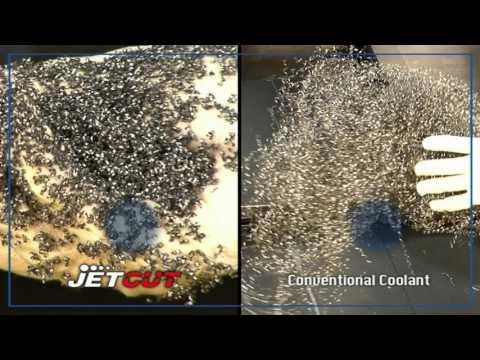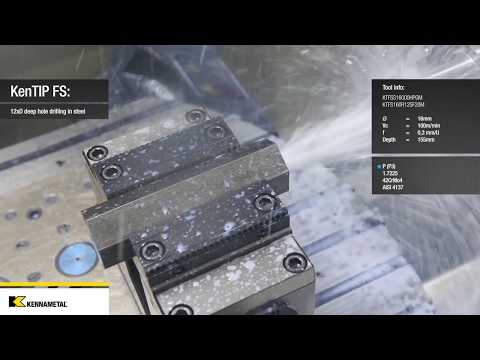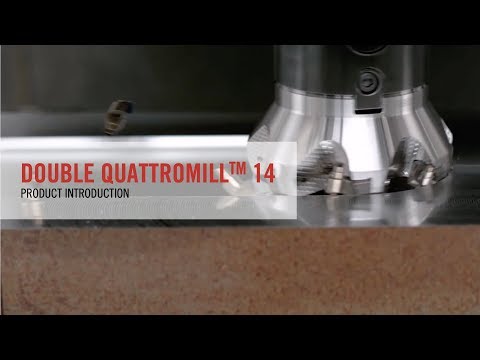When to Upgrade Your Indexable Cutting Tools
Four cutting-tool providers discuss recent advancements in indexable cutting technology.
Four cutting-tool providers discuss recent advancements in indexable cutting technology.
When is it time to upgrade your indexable cutting tools? When you need more flexibility or to cut time or effort from your part-making production. Get efficient.
Not getting the tool life you expect? Or maybe you just scrapped out an expensive workpiece after the insert moved during the cut?
The culprit might be tired or outdated indexable toolholders. You could replace what you have, but maybe it’s time to explore some of the recent advances in cutting-tool technology. Advancements include toolholders with precision coolant ports, modular quick-change drills, multidirectional turning tools, and high-performance indexable milling cutters, all of which serve to boost productivity, part quality and tool life. We explore areas of indexable cutting tools that are ripe for upgrade.
One telltale sign that an indexable toolholder has reached its end is a sudden drop-off in tool life. This may indicate a damaged pocket, worn clamping hardware or a tiny chip that has lodged itself in an inconvenient place, any of which will allow the insert to shift slightly during use.
It’s critical to either repair these tools immediately or send them to the scrap bin. Until that time, always inspect toolholders at each insert change. Thoroughly clean the pockets and seats, lightly lubricate the clamping screws and be sure to torque them per the manufacturer’s recommendation.
No matter how well you maintain indexable turning and milling tools or how long they last, be aware that newer, more productive tooling comes along each year or two. If you’re looking for the greatest productivity, don’t be afraid to give any toolholder an early retirement.
Stand in front of any CNC lathe or machining center long enough and you’re sure to see a long, stringy chip grab hold of the plastic coolant line and send it flying. In the best case, this means stopping the machine long enough to put everything back in order.
In the worst case, a wayward coolant line leads to broken cutting tools, scrapped parts or a damaged machine. Copper lines are a sturdier, more dependable alternative, but these can be a hassle to install—and burn up valuable time during changeover besides.
It’s for these reasons that cutting-tool manufacturers first began plumbing turning tools and milling cutters for through-the-tool coolant. These products have recently gone from decent to quite excellent.
However, with the development of precision coolant ports there are now some through-the-tool systems that can provide high-pressure cutting fluid to both sides of the insert. One example comes from Iscar with its JETCUT line of turning, grooving and cutoff tools.
“Tool life, productivity and chip control can all be improved when utilizing JETCUT high-pressure tooling technology with frontal (under) and external (over) coolant ports,” says Ashok Guruswamy, a product manager at Iscar. “When machining metal, heat is produced—by effectively reducing or controlling this heat, chips become more ductile and easier to break.”

This also lowers the temperature at the cutting edge and protects it from thermal shock or breakage. Shorter chips will not tangle around the workpiece, tool or machine parts, thereby improving workpiece surface quality and eliminating machine downtime, he explains.
Gaining Flexibility Through Modular Carbide Tools
Similar advancements have been made in drilling and milling technology. Cost pressures and the need for flexibility have led more than one tooling provider to develop modular, replaceable tip drills, in some cases eliminating the need for solid carbide alternatives.
Alexander Schmitt, director of holemaking at Kennametal, explains that the company’s KenTIP™ FS drill is available in diameters from 6 to 26 millimeters (0.236 to 1.024 inches) and lengths up to 12xD.
“It is a modular tool that’s simple to use, produces good hole quality, and is tough enough to compete with solid carbide drills across a wide range of materials,” he says.
This higher level of performance is in part made possible by the tool’s “full solid” carbide tip, which is available in several material-specific geometries that provide the same (or better) tool life than solid carbide drills but at a lower price.

The HPL geometry, for example, has a split-point design to reduce cutting forces in stainless steels and superalloys, while the HPC geometry offers four margin lands and a radiused point suitable for use in cast, ductile and compacted graphite irons. And thanks to a twist-on, quick-release design, the KenTIP™ FS is also much easier to use, with replacement times measured in seconds rather than minutes.
“The FS not only looks like a solid carbide drill but works like one as well,” says Schmitt.
Some cutting-tool manufacturers have opted to take machining operations in an entirely new direction. Nowhere is this more evident than Sandvik PrimeTurning™ methodology using CoroTurn® Prime tooling, a system that John Winter, a Sandvik Coromant product manager, says triples tool life and productivity in some customer applications.
Two styles are available—the Prime B uses a football-shaped insert designed for heavy roughing, and the Prime A version uses a triangular insert for semi-finishing to finishing operations.
Both are designed to cut away from the spindle (opposite traditional turning tools), although Winter is quick to point out that either tool can also be used with traditional toolpaths.
“The PrimeTurning™ method spreads cutting forces across a larger portion of the insert edge, rather than the nose radius,” says Winter. “It leverages the chip-thinning effect for better chip formation and lower temperatures in the cutting zone. Together with a unique geometry and new grade of carbide, most of our customers enjoy tool life improvements of at least 50 percent.”

Sandvik Coromant has taken parting applications in a different direction as well, at least for anyone with a Y-axis mill-turn or multitasking lathe. The insert pocket in the CoroCut® QD cutoff tool has been rotated 90 degrees, making it possible to use the lathe’s Y-axis rather than its X-axis for parting operations.
According to the company, this provides more than “six times higher blade stiffness” than that of traditional cutoff tools. The result is reduced vibration, better tool life and higher feed rates, especially on larger bar diameters.
Toolholder wear is primarily a factor of cutting forces and chip abrasion. Manfred Lenz, holemaking product manager at Seco Tools, offers examples of how the toolmaker has addressed each of these problems.
Seco’s Double Quattromill® indexable face mill, he explains, is available in sizes from 50 to 315 millimeters (2.0 to 12.4 inches) and made of a proprietary grade of steel that “resists the pounding received by all milling cutters.” Similarly, its Perfomax indexable insert drill boasts 60 RC laser-hardened pockets and a fatigue-resistant, polished body that optimizes chip flow.

“One of our primary goals is longevity, and we do everything possible to ensure the tools are as strong and wear-resistant as possible while maximizing accuracy,” says Lenz. “Because of that, our cutter bodies have evolved over the years. They’re now constructed of application-specific materials, are finish machined in the hardened state, and we pay special attention to the pocket geometry.”
The Perfomax™, an all-purpose indexable drill, was a complete redesign based on years of customer feedback and field testing. It covers hole sizes from 15 to 85 millimeters (.590 to 3.500 inches) in diameter and depths up to 5xD, and uses a strong, four-sided insert for the lowest cost per hole, Lenz explains.
To be fair, there’s a certain amount of technology overlap across the industry, so it’s hard to go wrong with any of these or other leading cutting-tool manufacturers. Finding which is best for your shop or situation comes down to a few simple steps—do your research, find the providers that offer excellent support in your area, test extensively and document the results.




